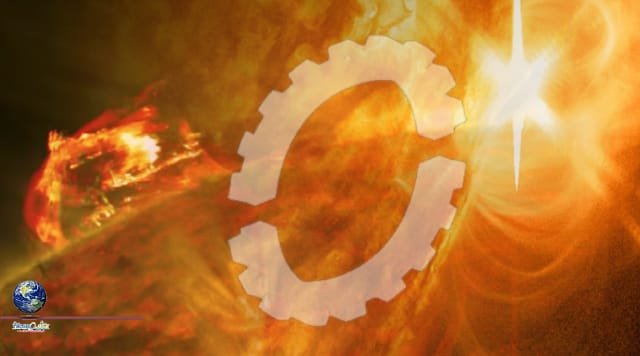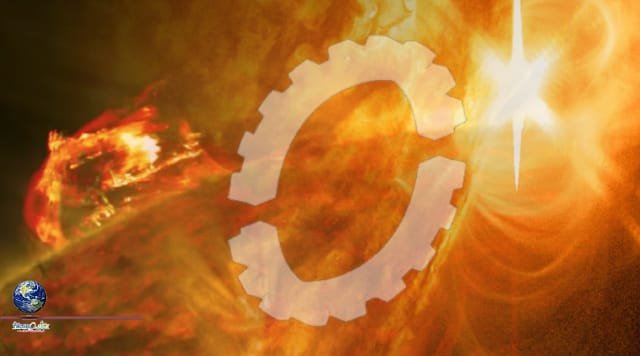A gigantic plasma wave that launched from the sun smashed into blasted Mercury likely triggering a geomagnetic storm and scouring material from the planet’s surface. The powerful eruption, known as a coronal mass ejection (CME), was seen emanating from the sun’s far side on the evening and took less than a day to strike the closest planet to our star,

Where it may have created a temporary atmosphere and even added material to Mercury’s comet-like tail, according to space weather The plasma wave came from a sunspot — areas on the outside of the sun where powerful magnetic fields, created by the flow of electric charges, get knotted up before suddenly snapping. The energy from this snapping process is released in the form of radiation bursts called solar flares or as waves of plasma (CMEs).
On planets that have strong magnetic fields, like Earth, CMEs are absorbed and trigger powerful geomagnetic storms. During these storms, Earth’s magnetic field gets compressed slightly by the waves of highly energetic particles, which trickle down magnetic-field lines near the poles and agitate molecules in the atmosphere, releasing energy in the form of light to create colorful blasted Mercury auroras in the night sky. The movements of these electrically charged particles can induce magnetic fields powerful enough to send satellites tumbling to Earth, Live Science previously reported, and scientists have warned that these geomagnetic storms could even cripple the internet.
Unlike Earth, however, Mercury doesn’t have a very strong magnetic field. This fact, coupled with its close proximity to our star’s plasma ejections, means it has long been stripped of any permanent atmosphere. The atoms that remain on Mercury are constantly being lost to space, forming a comet-like tail of ejected material behind the planet.
But the solar wind — the constant stream of charged particles, nuclei of elements such as helium, carbon, nitrogen, neon and magnesium from the sun — and tidal waves of particles from CMEs constantly replenish Mercury’s tiny quantities of atoms, giving it a fluctuating, thin layer of atmosphere.
Previously, scientists were unsure if Mercury’s magnetic field was strong enough to induce geomagnetic storms. However, research published in two papers in the journals Nature Communications and Science China Technological Sciences in February has proved that the magnetic field is, indeed, strong enough. The first paper showed that Mercury has a ring current, a doughnut-shaped stream of charged particles flowing around a field line between the planet’s poles, and the second paper pointed to this ring current being capable of triggering geomagnetic storms.
“The processes are quite similar to here on Earth,” Hui Zhang, a co-author of both studies and a space physics professor at the University of Alaska Fairbanks Geophysical Institute, said in a statement. “The main differences are the size of the planet and Mercury has a weak magnetic field and virtually no atmosphere.”
The sun’s activity has been increasing far faster than past official forecasts predicted, according to the National Oceanic and Atmospheric Administration’s Space Weather Prediction Center. The sun moves between highs and lows of activity across a rough 11-year cycle, but because the mechanism that drives this solar cycle isn’t well understood, it’s challenging for scientists to predict its exact length and strength.
Source: This news is originally published by LiveScience
